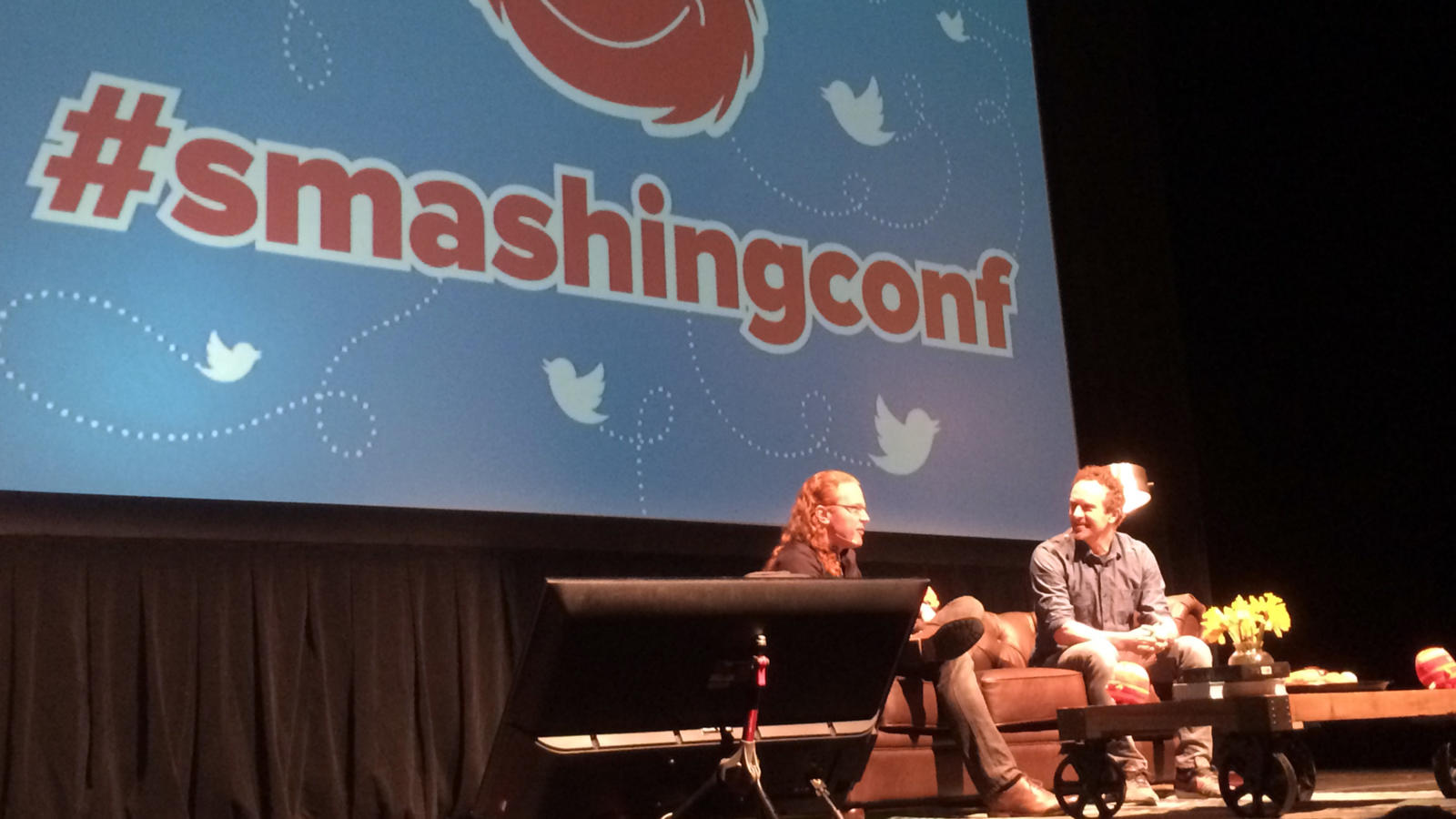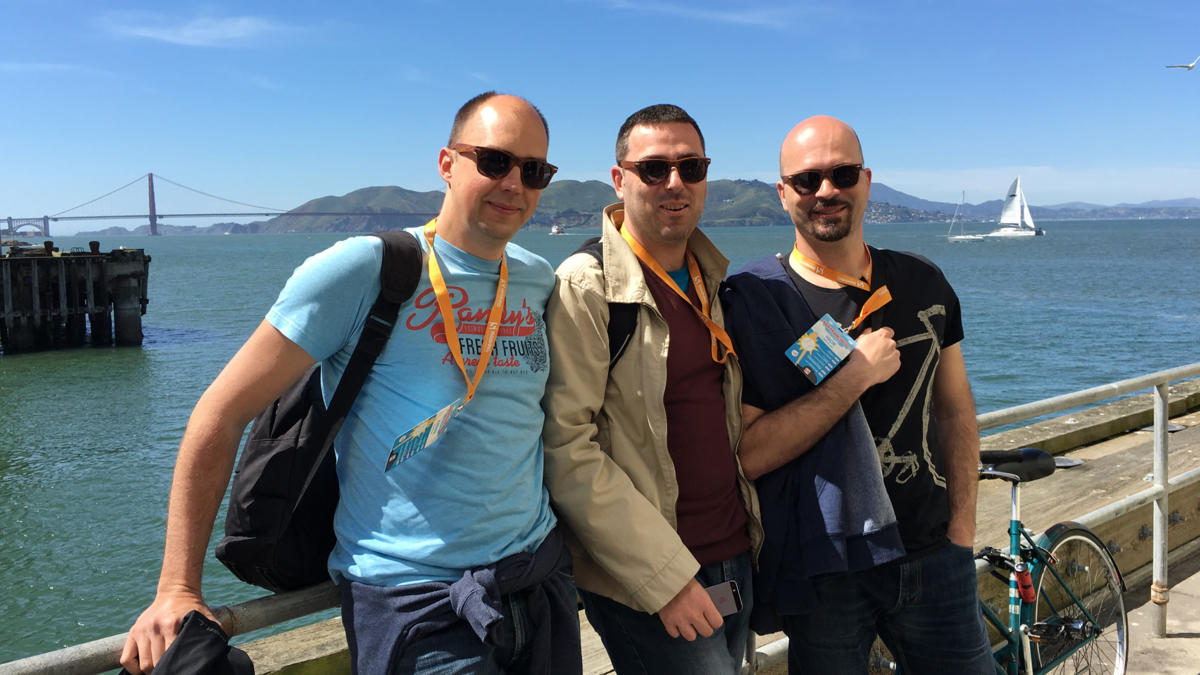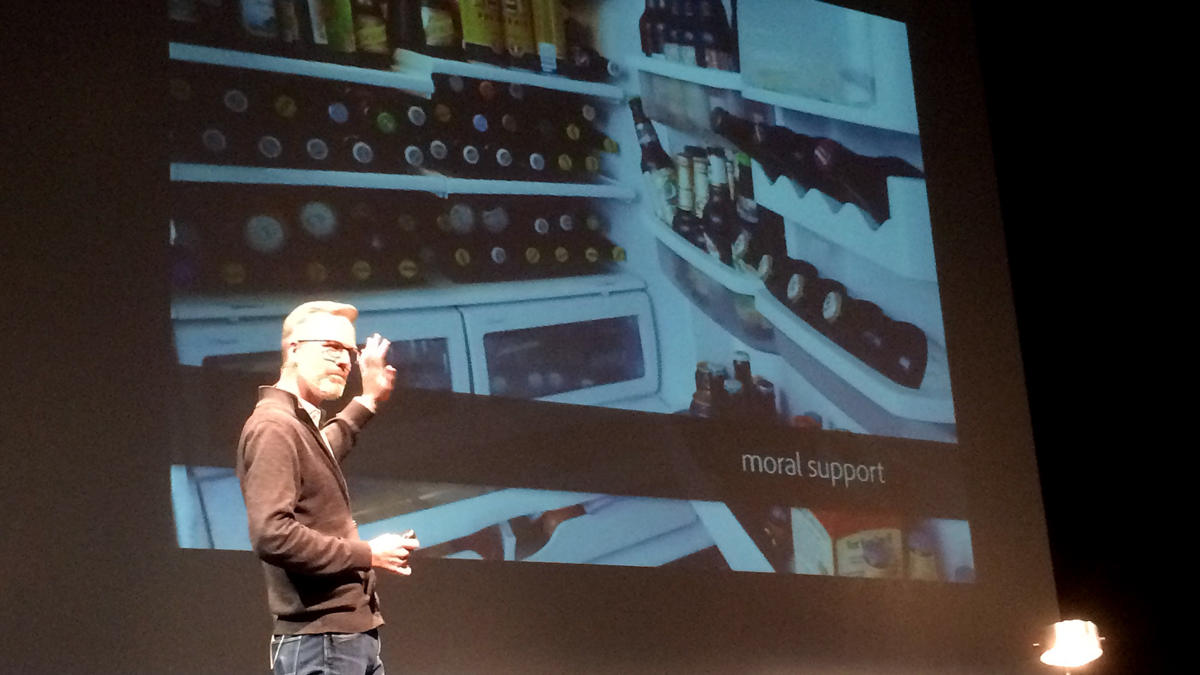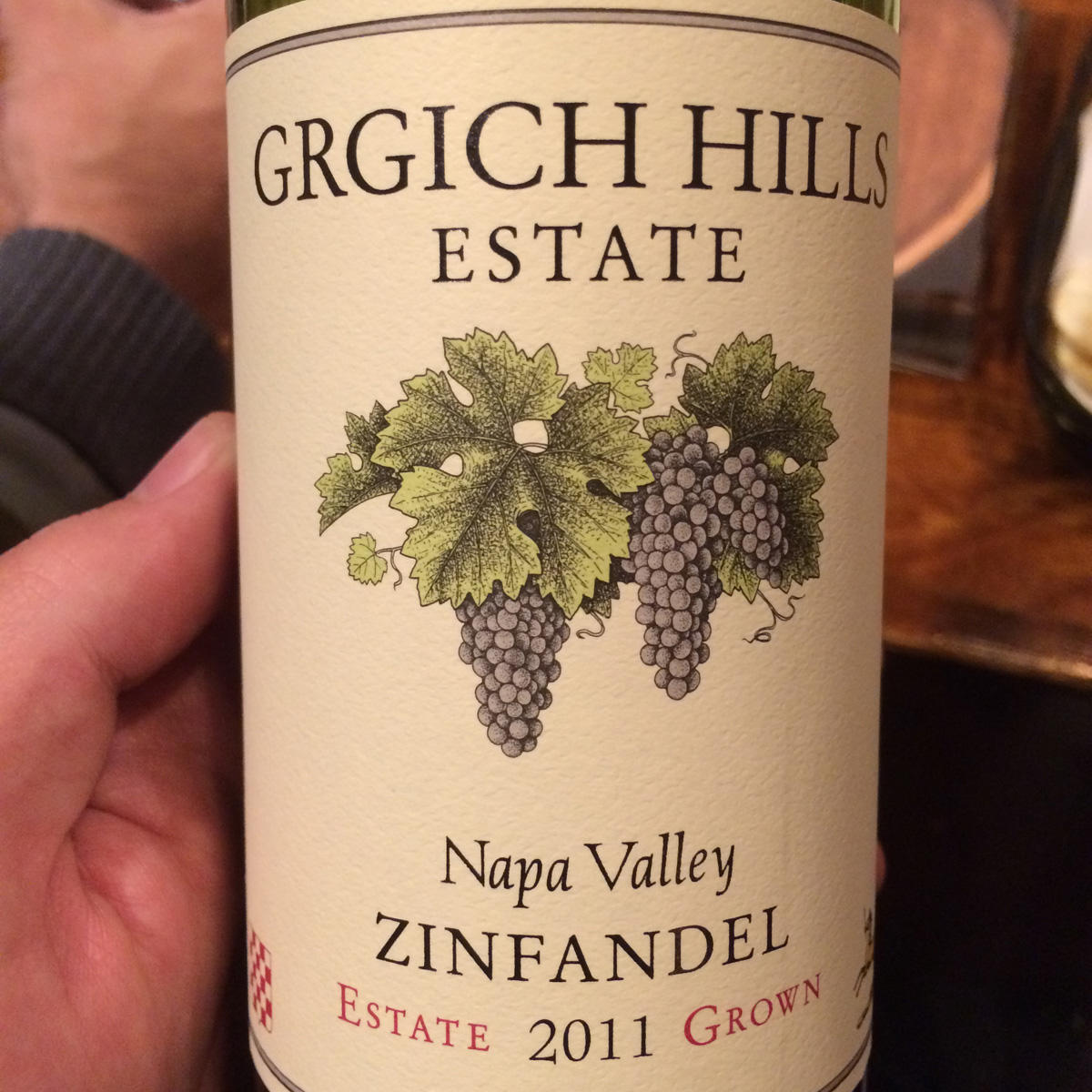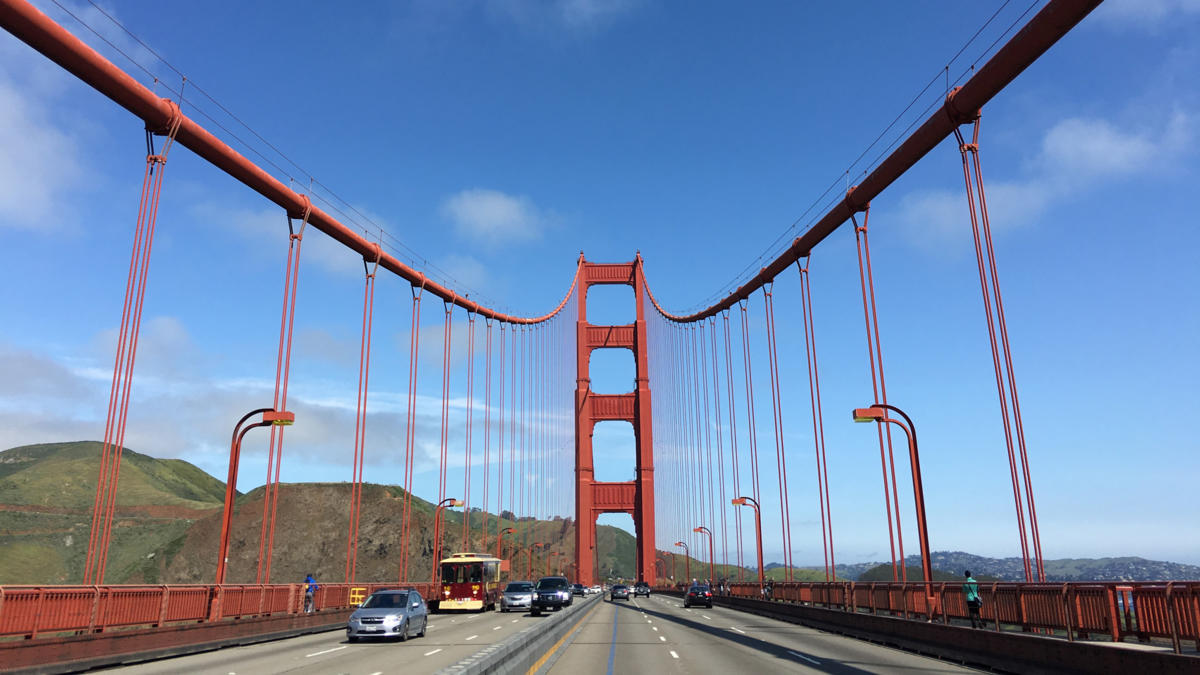Earlier this month we attended Smashing conference in San Francisco. An opportunity emerged to participate so we seized it. The conference was above average in the quality of talks and the city was, simply put, awesome. We enjoyed the trip despite the 9-hour time difference and a strong jet lag.
Even though we’ve been planning on going to a Smashing conference for a while, only Igor managed to make it to Oxford 2 years back. This time, it was him again, Vjeran, and me.
The conference
We, as conference organizers, know very well how hard it is to deliver high-quality presentations and workshops when you have more than a few speakers. The fact is that not all speakers have the same practice, experience, or the mojo for the stage. Being an expert in the field doesn't necessarily mean a person will excel in giving a presentation in front of a 200+ audience.
Smashing Conference in San Francisco had 15 speakers in 2 days and the average quality of the speeches was excellent. I attended all except one. Congrats to Vitaly and the rest of the team for assembling such a great line-up. I presume it helps to have mostly native English speakers, but great achievement nevertheless.
There were 2 big topics covered by more than one speech and mentioned in others as well: performance and design systems.
Performance
Today, the speed of the websites and web solutions is a UX topic and, therefore, is getting increasingly important. Although the average connection speed is going up, the sites are getting fatter, making the performance still something to worry about, especially because slow connection situations happen quite often even now (older phones, rural areas with bad 3G, overcrowded WiFi networks at conferences, etc.).
Ilya Grigorik of Google compared HTTP/2 and HTTP speed guidelines and concluded that they are still more or less the same, except for packing assets and domain sharding. Since the new standard is tunneling all traffic through one connection, there is no need for having big CSS and JS packages which will only be rendered once the complete packages are fetched. It is better to leave them as they are or package them in some modular way. My live tweet about this caught a lot of interest. Furthermore, domain sharding is not needed in HTTP/2.
Patty Toland of Filament Group thoroughly analysed why performance matters and presented first-hand advice on how to reduce the size of the site and make the load progressive so that the user gets something usable in less time.
Design systems
Looks like the Atomic Design is not enough any more. For more complex projects, products, and ecosystems there needs to be a well-formed design system in place.
Alla Kholmatova of FutureLearn introduced a pattern language and a modular design system for building web solutions. Dan Mall also touched on the topic of pattern design in his talk. I will remember his presentation for him mentioning the “McDonald’s Theory”, that people are inspired to come up with good ideas to ward off bad ones. This was the first time I heard about it. Need to practice this more. :) Jina Bolton, a product designer at Salesforce, talked about how a big vendor like Salesforce established its design system not only for its products but also for the whole ecosystem. Finally, well known designer Mark Boulton talked about his experience while working in difficult projects like CERN and Drupal community where stakeholder responsibility is highly distributed.
Other talks
I found a few other talks exceptionally good as well. A well-known CSS wizard Harry Roberts gave a very useful talk for all frontend people on how to apply traditional paradigms in CSS. A mind-blowing talk on perception and how people interact with systems was given by Dr. Susan Weinschenk, aka “The Brain Lady”. Possibly the best talk of the conference for me was the one by Jeffrey Veen (Partner at True Ventures and advisor at about.me, Medium, and WordPress) on how to craft creative cultures.
Most of the slides and videos can be found on the conference website. Enjoy!
Mystery speaker
As with every Smashing conference, a mystery speaker was announced and he turned out to be Jason Fried, co-founder of Basecamp. His presentation was conducted in a form of an interview, which proved to be a much better format. He discussed how they position Basecamp on the market and explained that they don’t want to do something just because everybody expects them to. They found their own way, and that is what we want with Netgen as well, to find our own way :)
Bad WiFi :(
Overall, the conference was exceptional. But we do have one major complaint: WiFi was mostly not working! Due to the highly expensive roaming, we were dependent on a couple of MiFis which simply wasn’t enough. Don’t know why there was no regular WiFi, but that is something that should have been better. It is, after all, a conference about web technologies.
Still…
The conference was overall very well organized thanks to the Smashing crew and the MC Tim Kadlec. Keep up the good work.
The Croatian trail
As we had 2 more days to spare, we used this time to drive to Sonoma and Napa Valley to visit a few wineries. The last and the most important for us was the Grgich Hills Estate which was established by a Croatian Miljenko Mike Grgich. He got famous in the wine industry when he became the first to beat the french winemakers in France with his 1973 Chateau Montelena Chardonnay (this event is now known as the Judgement of Paris). After his efforts, it was proved that the Californian Zinfandel is actually a Croatian grape varietal Crljenak Kaštelanski, probably brought to California by Croatian immigrants in the 19th century.
Speaking of immigrants, three Croatians set up a tent offering coffee and snacks back in 1849 and today the establishment is called Tadich Grill. It’s positioned in downtown San Francisco and is one of the oldest continuously operated restaurant in town. We had excellent lunch there, even if the dishes are not related to Croatian cuisine anymore :)
We also had a few drinks with a guy working for Lyft whom we knew when we were still students back in Croatia. He gave us insight on what it is like to be an IT developer in the Bay Area - not simple at all, due to the high prices of living. The rent cost is absolutely jaw dropping.
And, of course, we met a guy at the conference whose ancestors are from Croatia. Cheers. Dave! :)
Till next time!
However, we didn’t have time to check out Silicon Valley. Maybe some other time! But we did enjoy a really good conference, meet interesting people, tried fine wine, visited well-known landmarks, and appreciated nice weather.
San Francisco was, indeed, smashing :)
